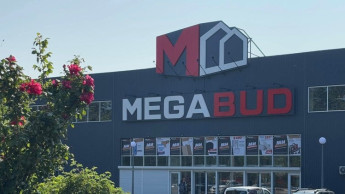
deep insights, facts & figures
03.08.2010
The company intends that the more compact size will open up market towns and smaller catchment areas
B&Q is remaining “tight lipped” about the detail of its new smaller store format proposed for UK town centres in the next 18 months, probably because the company doesn’t know all the details of its new format itself yet. Eighteen months is a long time in retailing, particularly at the moment, since there are many unknowns with a new Government and a new period of consumer austerity. However what is clear is that B&Q is looking to exploit what it perceives as the latest market opportunity to come its way. The new store format is said to be based on a fascia trialled by parent company Kingfisher in France and Russia under its Castorama and Brico Depot brands. They have also probably been watching the progress of home Depot’s smalle store format in the US. UK store sizes will be around 3,250 – 3,700sq metres, which makes them smaller than B&Q’s current small stores. The company intends that the more compact size will open up market towns and smaller catchment areas of around 40,000 population which at present are not viable for larger B&Q stores. This will enable it to increase the pressure on those of its competitors who are already operating, more or less without competition, in theses types of areas. In fact retailers such as Focus have long said that their stores in market town locations are amongst their most profitable. Indeed both Focus and Wickes are now trialling their own smaller store formats. No doubt B&Q managers will also have been looking at the performance of retailers such as Wilkinson, a 337-store chain with a strong DIY product mix. The company recently posted results which showed a 7.4 per cent sales increase and a doubling of operating profits during 2009. Since its stores are largely town centre based, these results will have demonstrated the continuing – and perhaps slightly surprising – resilience of high street retailing in the current tough economic climate. Of course Wilkinson would have been one of several retailers to benefit from the closure at the end of 2008 of a key competitor on the high street, Woolworths. Wilkinsons and other multiple high street retailers, such as Robert Dyas, as well as many independents, will be considering their response to the latest pronouncements from B&Q. Not just are the new stores set to be physically located at the end of the high street, but their product mix will also pose a threat to other retailers. Speaking at the recent Reuters Consumer & Retail Summit, Kingfisher’s chief executive Ian Cheshire said that the proposed new stores, although smaller, would be large enough to carry a full range of products, but would have a greater focus on housewares products, rather than DIY. This again would put them in direct competition with many high street retailers who specialise in this area, as well as DIY superstore operators Focus and Homebase who currently have larger ranges in this area. They are also particularly strong in the market town locations, which B&Q is setting out to target, and in the environs of London. Clearly B&Q is looking for new markets to aim at, since in the same speech, Mr Cheshire stated that he thought it likely that growth in the UK DIY market as a whole would remain negative for at least the coming two years. Furthermore the attraction of the homewares sector for the new stores was clearly demonstrated at the recent Exclusively Housewares exhibition in London, where a plethora of new products, bulging aisles and the presence of major housewares suppliers demonstrated the continuing vitality of this area. Despite not being in the traditional DIY area, the show also welcomed buyers from the DIY superstore groups, including B&Q. Mr Cheshire cited the example of the Apple iPad to illustrate that there remains discretionary spending out there, but to attract it, suppliers and retailers must offer products which catch the consumer imagination and which are funky and different, bringing something new and different to the market. Hence the attraction of housewares.
Related articles
Read also

 Menü
Menü















